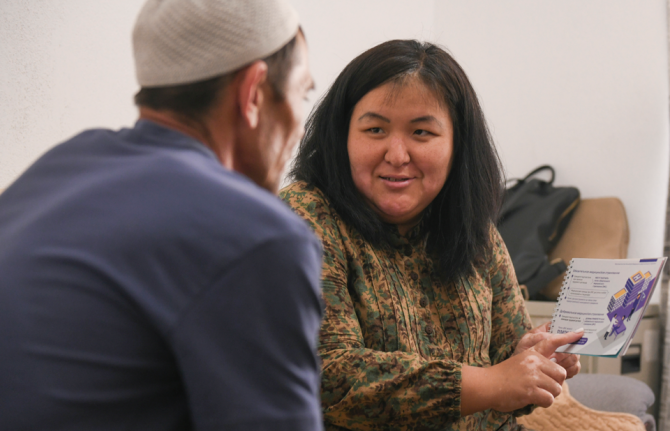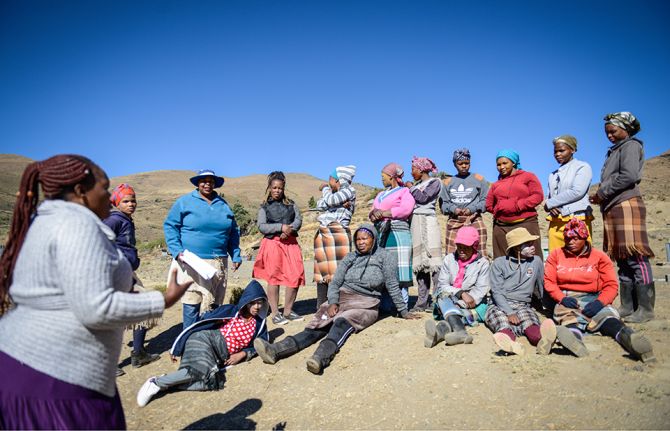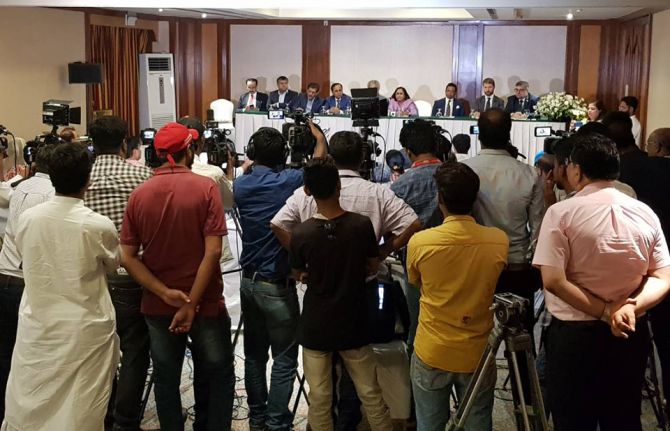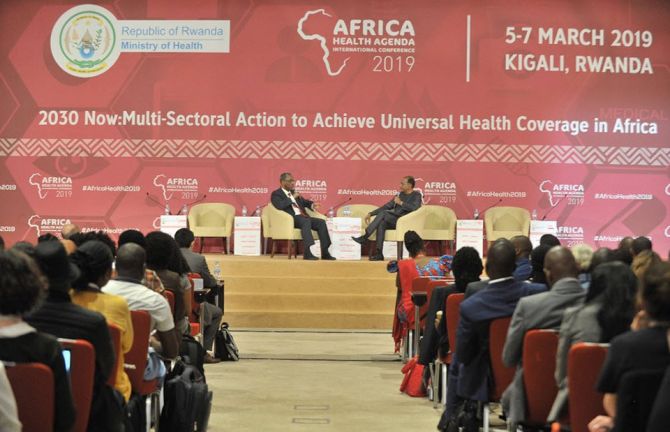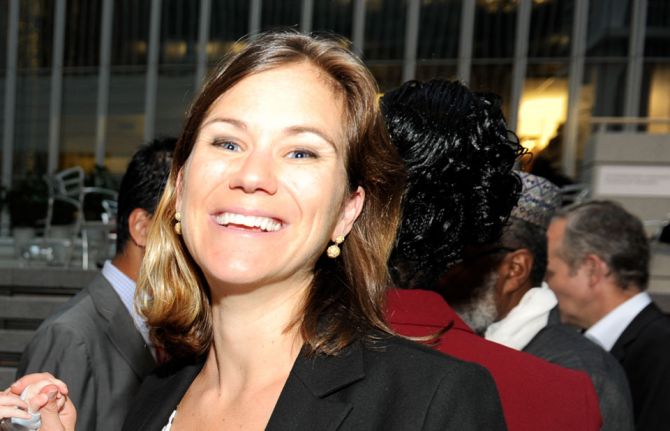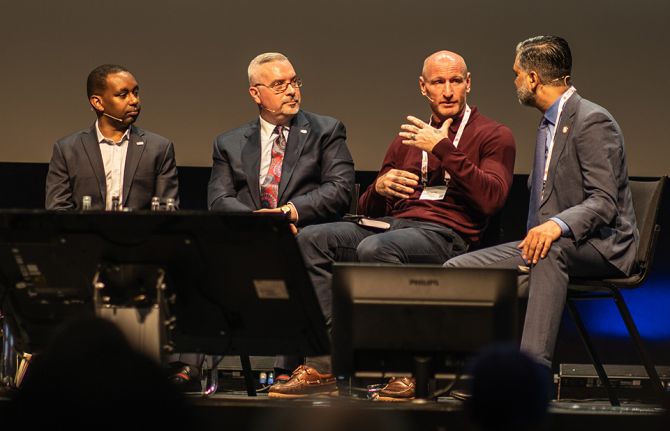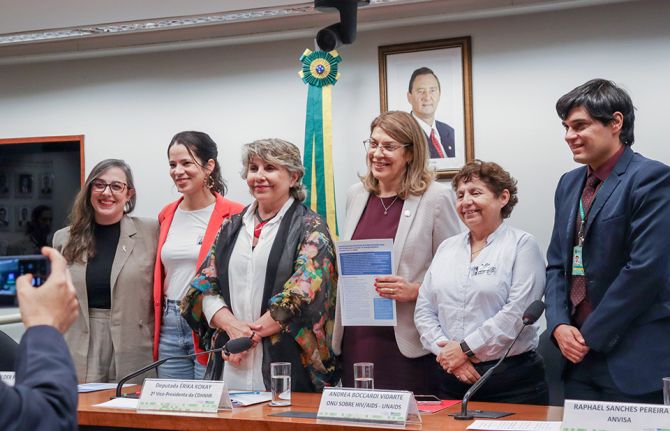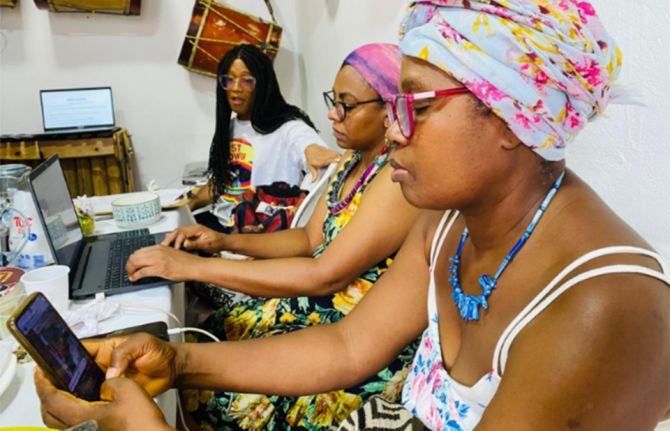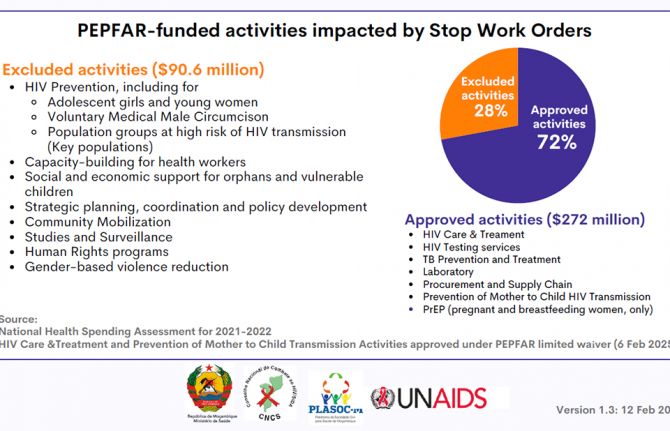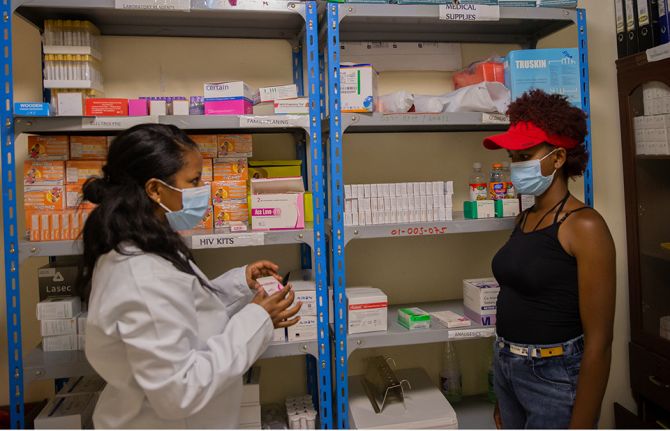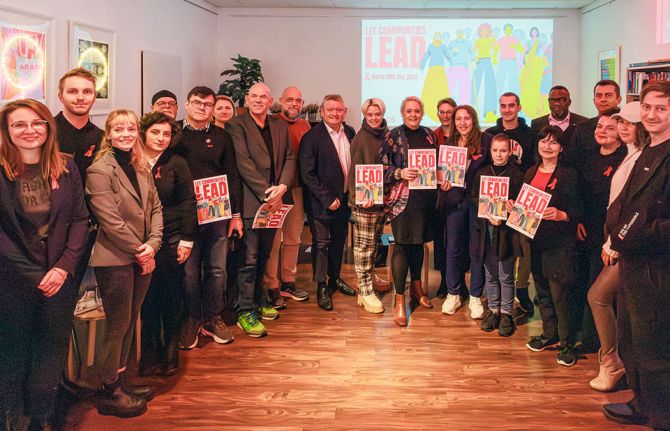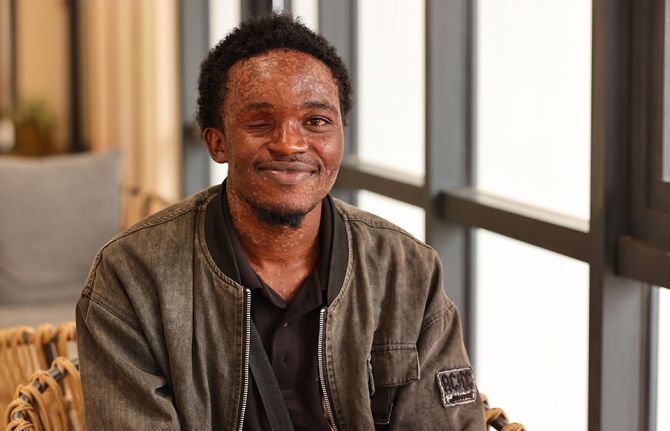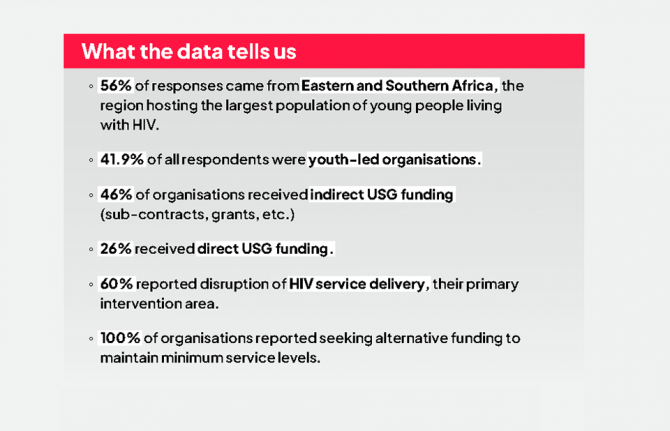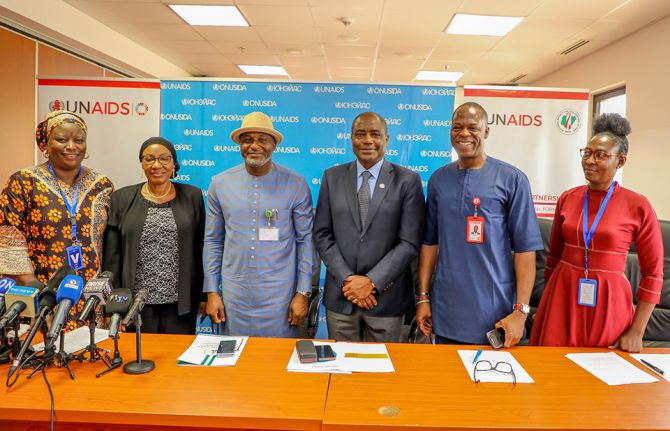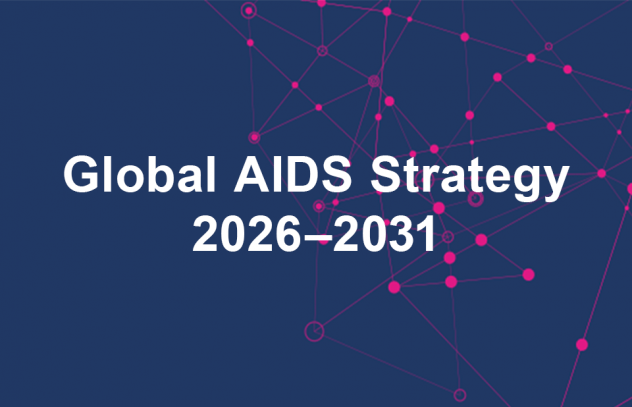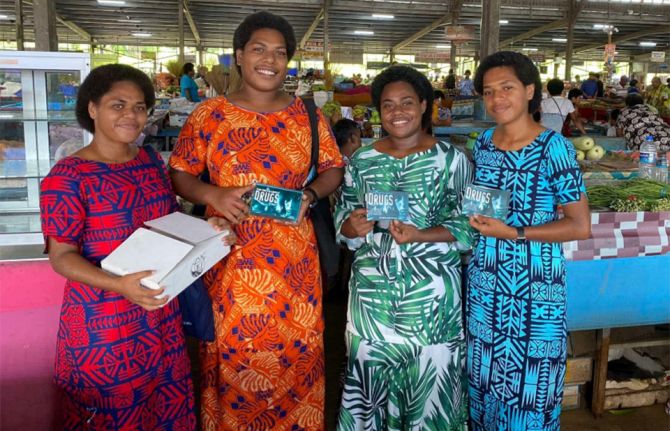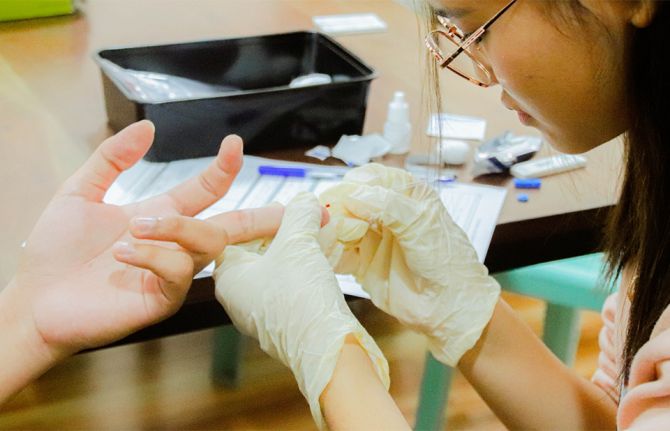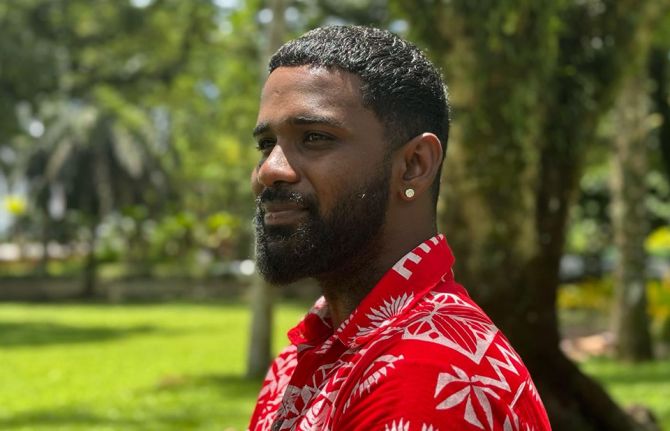
Feature Story
Letter to Partners 2010: Michel Sidibé, Executive Director, UNAIDS
16 February 2010
16 February 2010 16 February 2010
In his 2010 letter to partners, Mr Michel Sidibé takes stock of his first twelve months in office as UNAIDS Executive Director, and provides his vision for the coming years.
Against the backdrop of an epidemic in transition, he outlines a core set of values that can change the course of the epidemic.
Our challenge now is to take the progress that countries have made towards universal access and use it to achieve the Millennium Development Goals.
UNAIDS Executive Director Michel Sidibé
These include getting equity, banking on evidence, ensuring rights and dignity, aiming for zero new infections while providing treatment for everyone who needs it and leveraging interconnectedness of health and development.
“Our challenge now is to take the progress that countries have made towards universal access and use it to achieve the Millennium Development Goals,” said Mr Sidibé.

UNAIDS Executive Director Michel Sidibé’s 2010 letter to partners was circulated 16 February 2010.
Credit: UNAIDS/G. Williams
Setting the agenda for 2010 Mr Sidibé emphasized three issues. First, taking steps towards ending mother-to-child transmission of HIV. Second, reducing the number of new infections to zero and initiating new thinking around next generation of treatment options. And lastly to focus on tomorrow’s leaders by identifying, mentoring and learning from the younger generation of leaders that will carry the AIDS response ahead.
Read full letter (pdf, 875 Kb.)
Letter to Partners 2010: Michel Sidibé, Executive
Publications:
Letter to Partners 2010: Michel Sidibé, Executive Director, UNAIDS (pdf, 875 Kb)
Joint action for results: UNAIDS outcome framework, 2009 – 2011 (pdf, 388 Kb)
Related
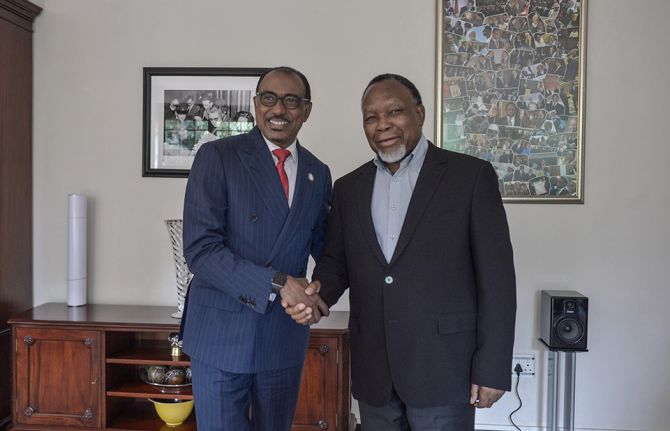 Keeping up the momentum in the global AIDS response
Keeping up the momentum in the global AIDS response

24 April 2019
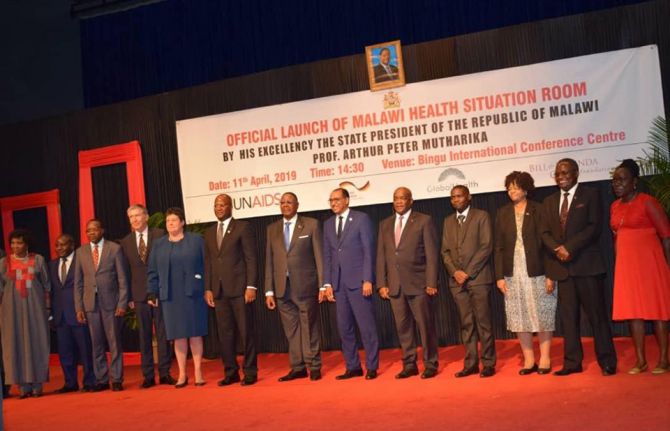 Malawi launches its health situation room
Malawi launches its health situation room

12 April 2019
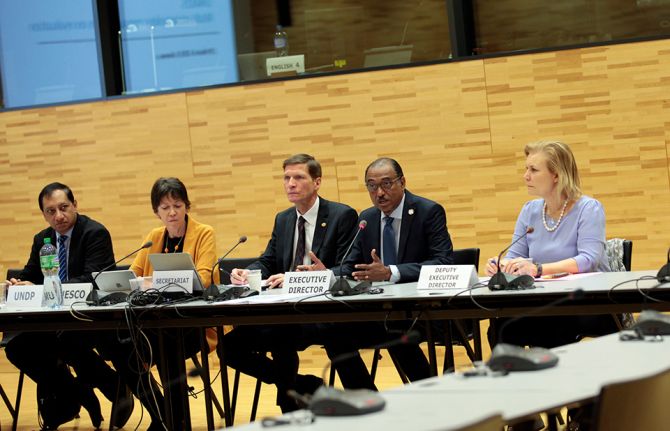 Learning lessons on evaluation
Learning lessons on evaluation

02 April 2019

Feature Story
Civil society: Have your say on community systems strengthening!
16 February 2010
16 February 2010 16 February 2010
Credit: International HIV/AIDS Alliance
The Global Fund to fight AIDS, Tuberculosis and Malaria (Global Fund) has developed a community systems strengthening (CSS) Framework in collaboration with other stakeholders including UNAIDS to clarify the range of community strengthening activities the Global Fund is mandated to support.
The International HIV/AIDS Alliance (Alliance) and the International Council of AIDS Services Organizations (ICASO) are conducting an online consultation for civil society to input into the draft framework that has been developed to outline community systems strengthening.
This is an important opportunity for community organizations to contribute to and strengthen the Framework
UNAIDS Head of Civil Society Partnerships, Kate Thomson
The Alliance and ICASO invite civil society views on this framework, which will play an important role for anyone working at a community level.
UNAIDS encourages civil society partners to participate in this consultation. “This is an important opportunity for community organizations to contribute to and strengthen the Framework,” said UNAIDS Head of Civil Society Partnerships, Kate Thomson.
Filling the gaps
The CSS framework has been developed in recognition that there are gaps in funding for many aspects of community action on HIV, TB, malaria, reproductive health and other health-related issues. It has been developed specifically to support the CSS component of Global Fund grants, but is applicable to all community based activities aimed at improving health though community based action.
By feeding back on the draft framework, you will help further develop what will become a key document which can:
- Help civil society actors articulate and scale up their activities, and access Global Fund funding
- Equip governments to better understand the vital roles of community actors particularly when building stronger health systems
- Enable the Global Fund to make informed decisions about awarding grants to proposals strong in CSS.
How to have your say
1. Read the Draft Community Strengthening Framework
Don’t have time to read the full version? We’ve read it for you – and condensed the vital information. Read the summary
2. Have your say on the eForum. Join the online focused discussion that will open a space for dialogue on the framework. Send an email NOW to: join-cssframeworkconsult@eforums.healthdev.org
3. Take the online survey Available online in the coming weeks.
4. Get your friends to have their say. Use the ‘Share’ link above, to use the social networking icons to spread the word.
5. Watch out for more details on how to participate over the next few weeks.
It is in all our interests to make sure that the CSS framework is as strong as possible so please – participate!
For further information email Taline Haytayan at the International HIV/AIDS Alliance: thaytayan@aidsalliance.org
Civil society: Have your say on community systems
External links:
International HIV/AIDS Alliance
International Council of AIDS Services Organizations (ICASO)
The Global Fund to fight AIDS, Tuberculosis and Malaria
Contact:
Taline Haytaya
E-mail: thaytayan@aidsalliance.org
Related

Feature Story
As global economy slows International Health Partners push for faster health progress
12 February 2010
12 February 2010 12 February 2010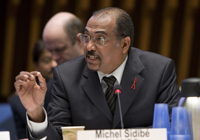
Executive Director of UNAIDS Michel Sidibé addressed the Ministerial Review Meeting of the IHP+ which took place in Geneva 4-5 February 2009.
Credit: World Health Organization
Meeting in Geneva last week, participants in the first Ministerial Review Meeting of the International Health Partnership and related initiatives (IHP+) adopted a document laying out bold and concrete commitments to push forward the objectives of the Partnership.
The official communiqué notes that the current severe global economic downturn will put pressure on the development budgets of donor countries and make it difficult for developing countries to sustain domestic funding for health.
“We agreed that this increases the importance of our objectives to secure more effective and predictable financing, as well as additional resources to achieve the health MDGs.”
"We reaffirmed our commitment to maintaining levels of development aid and domestic health budgets. We also commit to delivering predictable financing, and ensuring the effective use of all domestic and external resources. This is critical to achieving results and attracting additional resources."
I see the Partnership as an important instrument to help achieve universal access and to stand by those in need of HIV services
UNAIDS Executive director Michel Sidibé
Addressing the meeting, the executive director of UNAIDS Michel Sidibé pledged UNAIDS’ full support to the IHP+ process. “I see the Partnership as an important instrument to help achieve universal access and to stand by those in need of HIV services,” said Mr Sidibé.
The Review Meeting of the IHP+ took place 4-5 February 2009 to take stock of progress, review lessons, and examine ways to maintain commitment and momentum.
The IHP+ is a partnership which includes partner countries, United Nations agencies including UNAIDS, bilateral donors, civil society and private sector partners. Launched in September 2007, the partners aim to increase coordination in health and to strengthen health system in order to make progress on achieving the health-related Millennium Development Goals.
Right Hand Content
Feature stories:
International Health Partnership launches new web site (07 May 2008)
International Health Partnership launch (05 September 2007)
External links:
International Health Partnership
Publications:
IHP+ Ministerial Review Communiqué (pdf, 108 kb)

Feature Story
Vancouver Winter Games will strengthen UN-Olympic collaboration
11 February 2010
11 February 2010 11 February 2010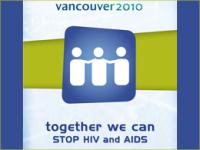
Thursday 11 February 2010, Vancouver, Canada – The 2010 Olympic Winter Games will kick off tomorrow night in Vancouver, marking the start of 16 days of intense competitions and celebrations, including a series of events where the United Nations family will celebrate its growing bonds with the Olympic family.
Olympic Truce
On Monday, Secretary-General Ban Ki-moon said in a statement: the Olympic Truce "draws attention to a terrible paradox. At the Olympics and throughout the year, we rightly honour the outstanding achievements of the human body and the positive social values of competitive sport, including team spirit and fairness. Yet all too often, through the carnage of war, we do damage to that same human body, and to our shared values.”
At the Olympics and throughout the year, we rightly honour the outstanding achievements of the human body and the positive social values of competitive sport, including team spirit and fairness. Yet all too often, through the carnage of war, we do damage to that same human body, and to our shared values.
Secretary-General Ban Ki-moon
On Monday as well, the President of the UN General Assembly also made a Solemn Appeal to the Member States for the observance of a truce during the Games. On 19 October 2009, the General Assembly had adopted the biennial Olympic Truce Resolution, coinciding with the send-off of the Olympic Torch.
That same day, a great step forward in the longstanding collaboration between the UN and Olympic families was made when the International Olympic Committee (IOC) was granted Observer Status at the General Assembly.
UN Activities at the 2010 Winter Games in Vancouver
In Vancouver, this collaboration will deepen through the involvement of several UN agencies and the presence of the Special Adviser to the Secretary-General on Sport for Development and Peace, Mr. Wilfried Lemke. “The 2010 Games are a great occasion to further strengthen the already close and productive relationship between the UN and Olympic families,” Mr. Lemke declared.
Tomorrow morning (Friday), he will highlight the contribution sport can make towards achieving the UN Millennium Development Goals at a high-level panel discussion organized by the NGO Right to Play, the University of British Columbia and Merck, with the support of the Vancouver 2010 Education Program.
On Saturday night, Mr. Lemke will host a dinner on behalf of Mr. Achim Steiner, Executive Director of the United Nations Environment Programme (UNEP), gathering officials – including Canada’s Minister of the Environment – and partners that have made a contribution to the greening of the Vancouver Games. UNEP and the IOC have been in partnership since 1994 when they signed an Agreement of Cooperation to incorporate environmental issues in the Olympic Games (more information here).
In total, 15 UN funds, programmes and specialized agencies have established agreements with the IOC, for example the Joint UN Programme on HIV/AIDS (UNAIDS). As part of its long-standing partnership with the IOC, UNAIDS has helped develop a toolkit on HIV for athletes participating in the Vancouver Games.
HIV education, prevention and awareness packages (containing male condoms) will be distributed to volunteers, workers and athletes as well as at outside venues (hospitality houses, hotels and bars). HIV counseling will be offered at the Olympic Polyclinics, and a public service announcement on HIV-related stigma and discrimination will be disseminated in the Village News over electronic billboards and in the Athlete Villages, as well as through the electronic media, including websites, blogs and You Tube.
‘Vancouver 2010 Olympic Truce Northern Outreach Project’
Last month, as part of the ‘Vancouver 2010 Olympic Truce Northern Outreach Project’, created by VANOC in partnership with the Canadian Forces and the United Nations Association in Canada (UNAC), 20 boxes filled with sporting goods were donated to children in 20 Aboriginal communities located in the Yukon, Northwest Territories and Nunavut, some of Canada’s most remote places.
Along with the donated equipment, UNAC sent a UN facilitator to hold workshops in each of the 20 communities to teach youth to inspire and educate others about physical activity and the values of sport.
Special Adviser's Meeting with Ban Ki-moon
Before heading to Vancouver, Mr. Lemke visited the UN Headquarters in New York where he met with Secretary-General, Ban Ki-moon. He briefed him on his activities since their last meeting in October 2009, and they also discussed the UN family's activities during the 2010 FIFA World Cup that will take place in South Africa from 11 June -11 July 2010.
Next month, Mr. Lemke will return to Vancouver for the Paralympic Winter Games, where a number of UN actors will also be actively engaged, in particular around the promotion of the rights of persons living with disabilities.
Vancouver Winter Games will strengthen UN-Olympic
Partners:
International Olympic Committee
Contact:
Antoine Tardy,
Advocacy and Communications Officer
UN Office on Sport for Development and Peace
E-mail: atardy@unog.ch
Telephone: +41 (0)22 917 47 12
Fax: +41 (0)22 917 07 12
Multimedia:
YouTube (Sport)
YouTube(UNOSDP)
External links:
Related

Feature Story
Brazil post offices join Global HIV Awareness Campaign
10 February 2010
10 February 2010 10 February 2010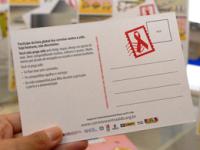
Campaign materials with HIV prevention messages will be sent to 800 000 households in Brazil.
Credit: M. de Sousa Silva
For the first time in Brazil, post offices will join efforts to prevent new HIV infections. The local take on the global campaign “Post Offices Fighting Against AIDS”, was launched Tuesday 9 February in a post office in Brasilia, the capital of the country.
Brazil, with an estimated 730 000 people living with HIV, is one of seven pilot-countries participating in this global initiative launched in 2009 by UNAIDS, Universal Postal Union (UPU), International Labour Organization (ILO) and UNI Global Union. The objective is to mobilize the network of 660,000 post offices around the world in the AIDS response.
The campaign will span more than 12 000 Post Offices in Brazil. Materials includes leaflets, posters, post-cards and a special letter with HIV prevention messages – all adapted to the Brazilian context.
The post office, with its wide reaching distribution network, offers a strategic entry point to reach the general population and post office staff with HIV prevention messages.
Pedro Chequer, UNAIDS country coordinator for Brazil
For example, the international slogan “Your post office cares” has been adapted to include an explicit prevention message: “The post offices are fighting against AIDS. What about you? Protect yourself: use condoms.”
The Minister of Health, Mr. José Gomes Temporão stressed the confidence and recognition of national post offices in Brazil and reinforced the commitment of the Brazilian government to the fight against prejudice, discrimination and to the consolidation of an inclusive and human rights based policy in the response to AIDS when speaking at the launch.
In the campaign’s first phase, materials will be distributed in the Federal District–where Brasilia is located–and in the priority regions of Amazonas and Bahia, states were UNAIDS and other UN agencies implement a joint programme to support the HIV response.
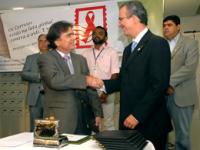
José Gomes Temporão, Minister of Health, and Carlos Henrique Custódio, the National Post Office President, at the launch of the post office HIV prevention campaign. Brasilia, 9 February, 2010.
Credit: M. de Sousa Silva
The Brazilian effort goes beyond the international initiative by delivering around 800 000 letters with HIV prevention messages to households in pilot regions. So for the first time ever in the country, families will receive HIV prevention information at home, through a special mail service delivery.
During the launch event, UNAIDS country coordinator for Brazil Mr Pedro Chequer said, “The post office, with its wide reaching distribution network, offers a strategic entry point to reach the general population and post office staff with HIV prevention messages. A multi-sectoral approache like this campaign will strengthen the AIDS response in the Brazil”.
For the campaign, a special web site has been launched containing information on AIDS and other sexually transmitted infections, details about the campaign with all campaign materials available for download and distribution. The web site includes a quiz for evaluation of personal HIV risk and a “contact us” section, coordinated by UNAIDS.
A special stamp has also been developed, containing the symbol of the campaign. The President of the National Post Offices in Brazil, Mr. Carlos Henrique Custódio highlighted the importance of such an initiative to be launched just before Carnival, when HIV prevention initiatives are reinforced by the government.

Pedro Chequer, UNAIDS country coordinator for Brazil spoke of the importance of a multi-sectoral approach in the AIDS response. Brasilia, 9 February, 2010. Credit: M. de Sousa Silva
In a second phase of the campaign, the International Labour Organization will support the development of a toolkit for postal employers to inform their staff about HIV in Brazil.
The “Post Offices Fighting Against AIDS” campaign is a partnership between the Brazilian Ministry of Communications, the National Post Offices, UNAIDS, the Ministry of Health, ILO, UPU, UNI Global Union and the National Federation of Employees from Post Offices, Telegraphs and related enterprises. The first phase of this global campaign will reach postal customers and post office staff in seven countries,Brazil, Burkina Faso, Cameroon, China, Estonia, Mali and Nigeria.
Contact: UNAIDS Brazil – (55 61) 3038 9220 or imprensabrasil@unaids.org
Brazil post offices join Global HIV Awareness Cam
Cosponsors:
Press centre:
UNAIDS, Universal Postal Union, UNI Global Union and ILO launch global HIV prevention campaign
Feature stories:
Nigeria launches postal service campaign for HIV awareness (21 October 2009)
International post office network to share HIV prevention messages (07 July 2009)
External links:
Universal Postal Union
UNI Global
Correios Contra AIDS
Publications:
Post Network awareness campaign posters (pdf, 578 Kb.)
Related

Feature Story
Linking sexual and reproductive health and rights and HIV prevention is key says Dutch AIDS Ambassador Marijke Wijnroks
08 February 2010
08 February 2010 08 February 2010
Dr Marijke Wijnroks, Netherland AIDS Ambassador, at UNAIDS Head Quarters in Geneva. January, 2010.
Credit: UNAIDS
The Netherlands’ AIDS Ambassador Dr Marijke Wijnroks recently visited UNAIDS Secretariat to meet with Michel Sidibé UNAIDS Executive Director and senior management of the Joint Programme. We took the opportunity to ask Dr Wijnroks about her role as her country’s AIDS Ambassador, and discussed some of the key issues in the Dutch approach to the global issue of HIV.
UNAIDS: Dr Wijnroks, you were appointed Dutch AIDS Ambassador in July 2009. What do you see as your role in the global response to HIV?
Marijke Wijnroks: As the Dutch AIDS Ambassador I represent the Netherlands’ Ministry of Foreign Affairs in the area of AIDS.
Our government has a policy covering both HIV and Sexual and Reproductive Health and Rights (SRHR), since we believe that these two areas are strongly linked.
One the one hand, the policy focuses on prevention, and on the one hand the promotion and protection of rights associated with Sexual and Reproductive Health. Issues covered by the policy are prevention of HIV infection, prevention of unwanted pregnancies, and preventing maternal morbidity and mortality, coupled with promotion and protection of the human rights of people who are vulnerable to HIV infection, sexual and reproductive rights included.
Within that broad policy framework, I try to focus on two areas. Firstly, what you can call the “normalisation” of the AIDS response. This means integrating AIDS services within the health system, and highlight the linkages between AIDS and Sexual and Reproductive Health and Rights. I believe that this is very close to what Michel [Sidibé] calls the “AIDS plus MDG” agenda or taking AIDS out of isolation.
Secondly, I focus on an area of the AIDS response which still requires exceptional attention. That is, the position and vulnerability of key populations including injecting drug users, sex workers and sexual minorities. These groups of people are often discriminated against and marginalized within their community and unfortunately there are not too many agencies and donors who speak out for them. So I think I bring an added value by being outspoken about the needs and rights of these groups.
UNAIDS: You mentioned the important link between Sexual and Reproductive Health and Rights and HIV prevention. Can you describe this?
Marijke Wijnroks: Well, since the main mode of HIV transmission is still sexual we cannot talk about preventing HIV without talking about sexuality, reproductive health services, or sexual and reproductive health and rights — this concerns heterosexual partners and men who have sex with men.
Even when you talk about concentrated epidemics among injecting drug users, yes they inject drugs which is a risk for HIV transmission, but they also have sexual relationships. So actually, in most part of HIV transmission sexuality is an issue.
Since the main mode of HIV transmission is still sexual we cannot talk about preventing HIV without talking about sexuality, reproductive health services, or sexual and reproductive health and rights.
Dr Marijke Wijnroks, Netherland AIDS Ambassador
In the absence of an AIDS vaccine or a cure, we need sustained behaviour change to stop new infections. For this to happen many different elements are needed. People must have the knowledge and the means to prevent HIV, and they must have an enabling environment in which they are free to take decisions to protect themselves — which is not always the case, in particular for women and girls.
UNAIDS: How has the financial crisis affected the donor community’s response to AIDS and broader health and development?
Marijke Wijnroks: The impact is very serious. We are also not immune to impact of the financial crisis in the Netherlands. Our budget for ODA [overseas development assistance] is linked to our gross national product. For years we were in a luxury position where our budget grew with our economy. But now that the economy is shrinking, we are faced with a declining budget so we’ve had to make very difficult choices about budget cuts, which is very unfortunate.
But the financial crisis does not only affect donor countries, it also affects developing countries. As a country’s revenues decline, that is when tax income and income from exports reduces, the money available to support AIDS or health programmes decreases.
Household incomes are also under pressure. We have accounts of people dropping out of treatment programmes because they cannot pay for associated cost such as transport or people do not have access to food and therefore cannot sustain treatment anymore.
A report was presented on the impact of the financial crisis on the AIDS response by the World Bank and UNAIDS to the latest meeting of UNAIDS Programme Coordinating Board. Its clear that lot of countries expect that there will be a direct impact on treatment programmes. There are fears that the impact will be even more severe for HIV prevention programmes; these cuts will disproportionally affect prevention programmes targeting key populations as these are considered politically easier to drop. So it’s a worrying trend, yes.
UNAIDS: Finally, how do you frame the AIDS response as a way to leverage health system strengthening?
Marijke Wijnroks: There have been some very unproductive discussions on AIDS versus health systems as if these were two competing elements. But I think that the AIDS response has given a lot of energy to the health movement.
The AIDS community have been able to mobilize a lot of focus around health system strengthening that I don’t think would have been there without it.
There have been some very unproductive discussions on AIDS versus health systems as if these were two competing elements. But I think that the AIDS response has given a lot of energy to the health movement.
Dr Marijke Wijnroks, Netherland AIDS Ambassador
AIDS has exposed many weaknesses within health systems, for example highlighting staff shortages as a bottleneck for scaling up treatment and services for people living with HIV.
Also, a sustained AIDS response requires a functioning health system for access to treatment and also when it comes to HIV prevention. So the AIDS response needs health systems to be effective and to be sustainable.
I remember visiting a district hospital in Zambia. I was shocked to see their “chronic disease department” overburdened with handling AIDS-related illness. In many countries we’ve since seen that the burden of AIDS on health systems has lessened with the scaling up of treatment programmes.
The other area that I think the AIDS movement has contributed enormously in is the expansion in the number of stakeholders involved in planning and implementation including civil society and community based organisations, and very importantly people living with HIV. The AIDS movement has created a much more bottom-up approach, with a clearer call for accountability.
I think there are a lot of elements within both the AIDS movement and AIDS funding that have helped to strengthen health systems. But we also need to invest in health system building, staff, infrastructure, and policy implementation, to make sure that we have health systems strong enough to deliver AIDS services and other programmes as well.
Linking sexual and reproductive health and rights
Related

Feature Story
Kenyan TV drama, ‘Shuga’, entertains as it raises AIDS awareness
08 February 2010
08 February 2010 08 February 2010A version of this story was first published at www.unicef.org
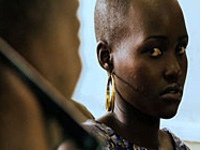
Actress Lupita Nyong'o in a scene from the Kenyan TV drama ‘Shuga’.
Credit: UNICEF
At its New York headquarters, UNICEF highlighted a recent collaboration with MTV through a screening of ‘Shuga’, a three-part TV drama about a group of young friends living in Nairobi, Kenya. As they explore the complexities of love, the characters confront the risk of HIV infection – and learn that a positive test result is not a death sentence.
MTV produced the programme in collaboration with UNICEF and other partners, including the US President’s Emergency Plan for AIDS Relief, or PEPFAR.
MTV has a long standing commitment to the AIDS response and has been partner of UNAIDS and its co-sponsors since 1996.
It’s fast, it’s furious, it’s cool – and that’s exactly how we filmed it.
Actress Lupita Nyong’o, who plays a lead role in ‘Shuga’ as Ayira.
Partnerships like this one play a vital role in UN’s efforts to halt and reverse the AIDS pandemic. When it comes to delivering messages about HIV prevention, working with media and entertainment partners such as MTV provides a valuable – and credible – connection to young audiences.
‘Meaningful engagement’
“It’s fast, it’s furious, it’s cool – and that’s exactly how we filmed it,” said actress Lupita Nyong’o, who plays a lead role in ‘Shuga’ as Ayira, a college student who finds herself torn between a boyfriend her own age and an older man. Ms. Nyong’o attended the screening and a panel discussion that followed, along with representatives of key partners in the project.

UNICEF collaborated with MTV to create ‘Shuga’, a TV drama set in Nairobi, Kenya. It includes messages about HIV prevention for young people.
Credit: UNICEF
The series shows how behaviours – including sexual involvement with multiple partners, sexual exploitation and alcohol abuse – can make young people more vulnerable to HIV.
During the panel discussion, PEPFAR Senior HIV/AIDS Prevention Advisor Tijuana A. James-Traore noted the programme’s power to speak effectively to young viewers.
“This is really what we mean when we talk about the meaningful engagement of young people in issues that impact their own lives,” she said. “No other person or persons, I think, could have communicated the messages in the way these young people have done.”
A regional priority
Messages about AIDS prevention are especially crucial in eastern and southern Africa, the heart of the global epidemic.

Lupita Nyong'o, a star of the Kenyan TV drama ‘Shuga’, attended a screening of the programme at UNICEF headquarters and took part in a panel discussion that followed.
Credit: UNICEF
“Young women in eastern and southern Africa are particularly severely affected by HIV,” said the Senior Specialist in HIV Prevention with UNICEF’s Unite for Children, Unite against AIDS campaign, Susan Kasedde. “In some countries, as many as three young women to each young man are infected,” she added.
Starting a dialogue
While popular dramas like ‘Shuga’ will not end the epidemic on their own, they can lead to dialogue about the risks of HIV infection. They can also help to combat the stigma that people living with HIV sometimes face.
Young women in eastern and southern Africa are particularly severely affected by HIV. In some countries, as many as three young women to each young man are infected.
Susan Kasedde, Senior Specialist in HIV Prevention with UNICEF’s Unite for Children, Unite against AIDS campaign
“We’re not the silver bullet,” said MTV International’s Vice President for Social Responsibility, John Jackson. “We’re not going to solve this problem. But we’re a critical player in getting a certain section of our community to think, to have a conversation they might not have otherwise.”
The Bill and Melinda Gates Foundation is assessing the effectiveness of ‘Shuga’ in changing behaviour within its target audience. For some members of the cast, that change has already begun.
“Especially where we were doing the scenes where we were doing the HIV testing,” said Lupita Nyong’o, “there was a hush on the set. It was a heavy time for us, and a lot of the actors said, ‘This is real. Yeah, this is real – and I need to make a change in my life.”
Kenyan TV drama, ‘Shuga’, entertains as it raises
Key populations:
Cosponsors:
Partners:
Unite for Children, Unite against AIDS
MTV Staying Alive Campaign
Feature stories:
'Never abandon, never give up’: ILO film helps China’s migrant workers challenge AIDS stigma (30 April 2009)
UNICEF working to teach AIDS prevention to young people in Guinea (16 April 2009)
Love in a time of HIV (19 December 2009)
Publications:
Children and AIDS, Fourth Stocktaking Report, 2009 (pdf, 5.04 Mb.)
The State of the World’s Children
Related

Feature Story
Removing bottle-necks for Universal Access in Central African Republic
08 February 2010
08 February 2010 08 February 2010
Dr Meskerem Grunitzky-Bekele UNAIDS Regional Director for West and Central Africa with President of the Central African Republic Mr François Bozizé, January 2010.
Credit: UNAIDS
The Central African Republic, one of the poorest countries in the world, has been heavily affected by the HIV epidemic. It is estimated that 160 000 people are living with HIV in the country, and only one in four of those in need have access to Anti-Retroviral Treatment (ART).
The situation for orphaned and vulnerable children in the country is dire, with assistance only provided to 2400 children, one child out every 30 who need support.
Pediatric care is almost exclusively implemented at one hospital in the capital. They currently have 630 children in their care, and national coverage only reaches one child out of 20 to 22 who requires HIV treatment.
To scale up access treatment, but also prevention, and care and support services, the Central African Republic has been awarded Global Fund grants (Rounds 4 and 7). However, the country has encountered a number of bottlenecks and structural problems with a severe effect on implementing the national response to AIDS.
Some of the most intricate obstacles include pharmaceutical stock shortages and distribution issues, minimal involvement of civil society, as well as effective financial management. This has led the Global Fund to suspend Round 7 grant disbursements and postpone the Malaria Round 8 grant signature, as precautionary measure.
This joint mission shows the importance of the UN working together with bilateral partners and civil society organizations as one to remove bottle-necks for Universal Access to HIV prevention, treatment, care and support services.
Dr Meskerem Grunitzky-Bekele UNAIDS Regional Director for West and Central Africa
To unblock bottlenecks, a joint mission was undertaken by UNAIDS, Global Fund and WHO Roll Back Malaria, ESTHER, USAID, ,French Cooperation and Grant Management Solutions to meet with government officials including the Head of State Mr François Bozizé and the Prime Minister Mr Faustin Archange Touadéra.
The delegation comprised of senior experts from key agencies working on AIDS and on Malaria in the region with an objective to ensure all requirements of the global fund round 8 are met in the country’s proposal.
In Central African Republic, the mission found conditions similar to countries in state of humanitarian emergency–running the risk of total ARV drug stock outs before the end of January 2010. This could have lead to devastating treatment interruption for people living with HIV currently accessing ART in the country.
An emergency order of 50,000 doses was submitted to the Centrale Humanitaire Médico-Pharmaceutique in Nairobi, paid directly by the Global Fund. The first shipment arrived to the country on 30 January, just one week after the joint mission, with a second shipment on scheduled for the 10 of February.
Simultaneously, the Government made a special commitment for an order for approximately 2.5 months of treatment which is expected to arrive in March 2010. In addition, the National AIDS Commission has ordered three months of treatment to be paid by the GFATM which is expected to arrive in June 2010 – this order will then be renewed on a quarterly basis.
The mission was organized within the framework of the Joint UN Regional Team on AIDS and jointly led by Dr Meskerem Grunitzky-Bekele UNAIDS Regional Director for West and Central Africa and Cyrille Dubois, Global Fund Regional Team Leader, West & Central Africa.
"This joint mission shows the importance of the UN working together with bilateral partners and civil society organizations as one to remove bottle-necks for Universal Access to HIV prevention, treatment, care and support services," Dr Grunitzky-Bekele said.
During the mission a roadmap was developed with clearly defined actions and responsibilities, which has gained widespread political support from all levels of Government and development partners.
The UN Country Team in the Central African Republic provided strong support to the mission and expressed commitment to ensure follow up of the roadmap. UNAIDS Regional Support Team for West and Central Africa continue to coordinate regional support for the implementation of the roadmap with the frame work of the Joint UN Regional Team on AIDS.
Removing bottle-necks for Universal Access in Cen
Cosponsors:
Partners:
Press centre:
UNAIDS pledges to help ‘make the money work’ for Global Fund
External links:
USAID
French Cooperation
ESTHER
Grant Management Solutions
Publications:
Memorandum of Understanding between UNAIDS And The Global Fund (pdf, 2.08 Mb.)
Related
 Impact of the pause of US foreign assistance in Côte d'Ivoire
Impact of the pause of US foreign assistance in Côte d'Ivoire

19 February 2025

Feature Story
Lack of resources could undermine gains made in the HIV response in Pakistan
05 February 2010
05 February 2010 05 February 2010
Pakistan’s capacity to effectively respond to the HIV epidemic could be hindered due to the lack of resources to implement its revised National Strategic Framework. The framework, endorsed by partners involved in the response, provides evidence-based strategic direction to urgently address the increasing levels of HIV infection amongst injecting drug users (IDUs) and other populations through sexual transmission and avoid a spillover to the general population.
Despite having an HIV prevalence of less than 0.1% among its general population, Pakistan’s HIV epidemic has transitioned from low to a concentrated one as the overall prevalence among IDUs has steadily increased from 10.8% in 2005 to nearly 21% in 2008.
In part, the region’s comparatively heavy burden of injecting drug use stems from the presence of long-standing trafficking routes for illicit opium. Opiates are the drug of choice for 65% of Asia’s drug rehabilitation patients, although drug use patterns vary greatly within the region. There are an estimated 91, 000 injecting drug users in Pakistan of which nearly one in four in large urban settings are infected with HIV.
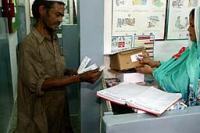
An increase in resources available would increase the provision of harm reduction services that are producing positive results mitigating the spread of HIV amongst IDUs. Credit: P.Virot
Syringe Exchange Programs and Drug Harm Reduction including detoxification programs for IDUs are a priority in light of the epidemic trends among IDUs. Substantial scale-up of harm reduction and HIV prevention services started around 2002-2004 and the country is now set to pilot drug substitution among drug users. Harm reduction services are being implemented by partner NGOs which can play a pivotal role in reaching out and expanding the provision of such services.
Biological and behavioral surveillance studies have shown an increase in knowledge regarding HIV, increase in condom use and decreased sharing of syringes/needles among IDUs exposed to risk reduction program activities. However, coverage of these programs is still low. An increase in resources available would expand the provision of risk and harm reduction services that are producing positive results mitigating the spread of HIV among populations at higher risk.
Knowing your epidemic
Following the trend seen in other countries in Asia, also known as the Asian Epidemic Model, the epidemic in Pakistan is characterized by the rapid HIV transmission and high prevalence among IDUs in the initial stages and potential spill-over into other key populations at higher risk such as sex workers and men who have sex with men (MSM). Subsequently, through bridging populations such as partners and clients of sex workers, the epidemic could find its way into the general population. The connections and overlap between drug use and sex work coupled with high prevalence of unsafe sexual practices and low self risk awareness indicate that there is potential for rapid spread of HIV infection among key populations.
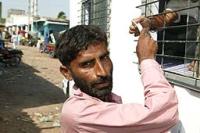
The overall HIV prevalence among injecting drug users in Pakistan has steadily increased from 10.8% in 2005 to nearly 21% in 2008. Credit: P.Virot
One of the implementation successes in the country is the 2nd generation surveillance for tracking trends in the epidemic. A country specific methodology has been developed, with mapping of risk groups in the first phase and collection of behavioral and biological data after mapping has been completed. This has provided up to date information on size of risk groups as well as on HIV prevalence among them.
Epidemiological evidence gathered over the last years has therefore confirmed Pakistan’s ‘concentrated’ epidemic. It has also underlined the low levels of adoption of HIV prevention measures in the general population and among youths.
Adapting the response
In line with the epidemic trend, supported by results from recent surveillance data, the Government of Pakistan has recently reviewed its National Strategic Framework (NSF-II). The new five year initiative (2008 – 2012) builds upon the initiatives outlined in the first national framework and renews focus towards rapidly scaling up prevention and HIV service delivery programs for most at risk populations.
The country has drafted its national AIDS policy and legislative framework, through the ‘HIV & AIDS Prevention and Treatment Act’, in order to support the government in providing services to populations at risk of acquiring HIV infection due to their occupation and/or practices. The basic provisions of the policy are intended to guarantee access to care, support and equitable access to treatment for people living with HIV. It is also intended to reduce stigma and discrimination against people living with HIV as well as to improve access to HIV specific information and prevention services.
“Pakistan has made substantial progress over recent years, including in addressing sensitive social issues and increasingly involving people living with HIV in the forefront of the AIDS response” says Oussama Tawil, UNAIDS Country Coordinator, “however, it is now critical that a collective effort be made to sustain the momentum in these life-saving measures”.
Lack of resources
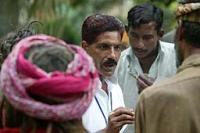
AIDS could have a severe impact in certain communities over the coming decade. Financial and human resources are urgently needed to scale-up the provision of HIV prevention, treatment, care and support services. Credit: P.Virot
Despite having a thorough plan of action built upon evidence-based recommendations, the country is facing a shortage in resources that could jeopardize an effective and timely response to the epidemic.
A costing exercise undertaken by the Government estimated that the total fund requirement to implement the NSF II is US$ 293 million over five years. During 2006-2007, AIDS expenditure totaled US$ 29.67 million, with prevention-related activities having been allocated the biggest share (61%).
While resources have been made available to the country by the World Bank, bilateral funding and government resources, these funds are insufficient to cover the current needs and to create a sustainable long-term capacity to address the HIV response in the future.
AIDS could have a severe impact in certain communities over the coming decade. Financial and human resources are urgently needed to scale-up the provision of HIV prevention, treatment, care and support services in order to have a definite impact on the HIV epidemic and to mitigate its social and health consequences.
Lack of resources could undermine gains made in t
Key populations:
People who use injecting drugs
People living with HIV
Feature stories:
Going beyond social taboos: Parliamentarians begin inclusive dialogue with key groups in Pakistan (27 Oct 2009)
First association for people living with HIV in Pakistan (24 August 2007)
Multimedia:
External links:
Ministry of health of Pakistan
Publications:
Pakistan: Involvement of key policy makers in the fight against HIV (pdf, 113 Kb.)
HIV prevalence among injecting drug users, men having sex with men, and female sex workers in Pakistan, 2004–2007 (ppt, 363 Kb.)

Feature Story
Study: In Malawi, money in girls’ hands boosts school enrolment
03 February 2010
03 February 2010 03 February 2010A version of this story was first published at www.worldbank.org
Small stipends paid directly to young girls have had a powerful impact on their school attendance in Malawi, reducing drop-out rates considerably and helping to protect them from HIV. That’s among the findings from a study, supported by the World Bank, of a two-year cash transfer programme targeting girls aged 13 to 22 that wrapped up in December 2009.
Stipends ranging from $1-$5 a month for the adolescent girls, in addition to payments to parents that ranged from $4-$10, reduced drop-out rates by approximately 40 percent.
And, for every extra dollar a girl received above $1, “enrolment increased by a percentage point,” says Berk Özler, a senior economist with the World Bank’s Development Research Group.
Özler and fellow researchers Sarah Baird of The George Washington University and Craig McIntosh of the University of California, San Diego, wanted to test the best way to use cash payments known as conditional cash transfers to boost school enrolment among young women in sub-Saharan Africa.
Drop-out rates are high among teenage girls in Malawi, one of the poorest countries in Africa. One of the main reasons is the relatively high cost of secondary school. Another is that Malawian girls tend to marry at a young age, and “once a girl is married, schooling is over,” says Özler.
Keeping girls in school who otherwise would have dropped out may not only increase learning, but delay marriage and reduce the rate of teenage pregnancy and sexually transmitted infections. Adult HIV prevalence in Malawi is around 12 percent, according to UNAIDS estimates.
Staying in school is part of an effective ‘social vaccine’ with respect to sexual risk behaviour.
Patrick Brenny, UNAIDS Country Coordinator in Malawi
In another paper, researchers found that the onset of sexual activity was significantly delayed among girls who took part in the programme, and their likelihood of being married or pregnant after one year had declined.
Past studies have suggested that “just the fact of being in school may lead to these desirable outcomes but the evidence was scant,” Özler says.
These current findings reinforce UNAIDS’ evidence-based contention that girls continuing their education greatly lowers their vulnerability to HIV. For those who stay in secondary school, each additional year means they are more likely to develop the skills and experience needed to keep themselves safe from HIV.
According to Patrick Brenny, UNAIDS Country Coordinator in Malawi, the study underlines the critical necessity of a comprehensive approach to reducing young women and girls' risk and vulnerability to HIV infection in Malawi.
“Staying in school is part of an effective ‘social vaccine’ with respect to sexual risk behaviour,” said Mr Brenny.
Empowering young people to protect themselves against HIV is one of the nine priority areas in the UNAIDS Outcome Framework 2009-11.
Cash transfers boost schooling, nutrition
In countries without adequate safety net support, children’s nutrition often suffers, and children, especially girls, are taken out of school. In an attempt to counteract this trend, some 29 developing countries have put in place some type of conditional cash transfers programme to boost schooling and nutrition, with many others planning on piloting one.
The World Bank backs conditional cash transfers programmes in 13 countries. It provided $2.4 billion to such initiatives in 2009 during the global economic crisis. Studies have found that cash payments to the female head of household leads to better outcomes for children and families. In Brazil, for instance, the chance of childhood survival increases by 20 percent.
But the effect of cash payments made directly to girls versus parents had not been studied until now.
Support to girls ‘makes sense’
In Malawi, the researchers wanted to find out whether the monetary amount of the cash transfer would make a difference, and whether making the payment conditional on school attendance would have an additional impact. They also wanted to test whether making payments directly to girls would affect the outcome.
The study involved a sample of 3,805 girls and young women aged 13 to 22 in 176 urban and rural areas in Zomba, a highly populated district with high dropout rates and low educational attainment. According to a 2005 government survey, children drop out of school mainly due to financial hardship.
Of these girls, a randomly selected group of 1,225 were either offered stipends on the condition they attend school 80 percent of the time, or offered the same stipends unconditionally. The rest did not receive any offers and served as the comparison group for the study.
Girls getting the monthly stipend participated in a lottery where they picked a bottle cap out of an envelope to win an amount between $1 and $5 a month. Guardians were also randomly assigned a separate amount ranging from $4 to $10 a month. On average, girls received $3 and their parents $7, meaning that cash payments to both girls and guardians totalled an average of $10 a month, but ranged from $5-$15.
Each household received an informational sheet detailing the amounts and conditions of the offer, if there were any, and the contract was signed by the girl and her guardian.
Özler says that the condition to attend school at least 80 percent of the time did not seem to make a difference to schooling outcomes in Malawi, nor did increased total cash payments above the minimum of $5 per month. That’s in contrast to the CCT experience in Latin America, where the condition to attend school has been key to the programme’s success.
The girls, however, were demonstrably motivated by their stipends, which they mostly spent on personal items such as clothing.
“The study was successful in getting dropouts to come back to school and in keeping girls in school. Maybe it makes sense to directly support adolescent girls,” says Özler.
The researchers are now conducting follow-up tests and surveys in Malawi to assess, among other things, the impact of the programme on maths and reading skills.
The study was funded by the Global Development Network; the Bill & Melinda Gates Foundation; the World Bank’s Gender Action Plan, Knowledge for Change Trust Fund, World Development Report 2007 Small Grants Fund, Spanish Impact Evaluation Fund, and Research Group; and the National Bureau of Economic Research in the United States.
Study: In Malawi, money in girls’ hands boosts sc
Cosponsors
Partners
Bill & Melinda Gates Foundation
National Bureau of Economic Research
The Global Coalition on Women and AIDS
Publications


